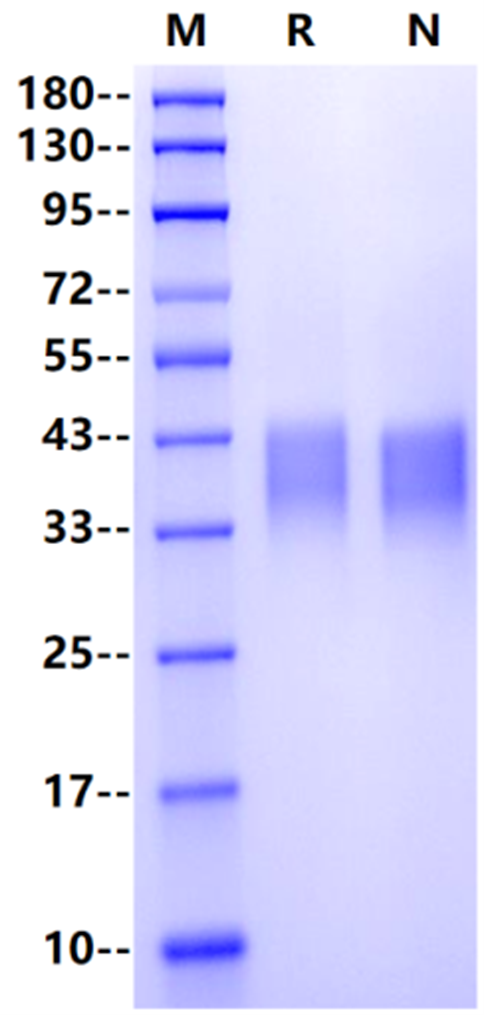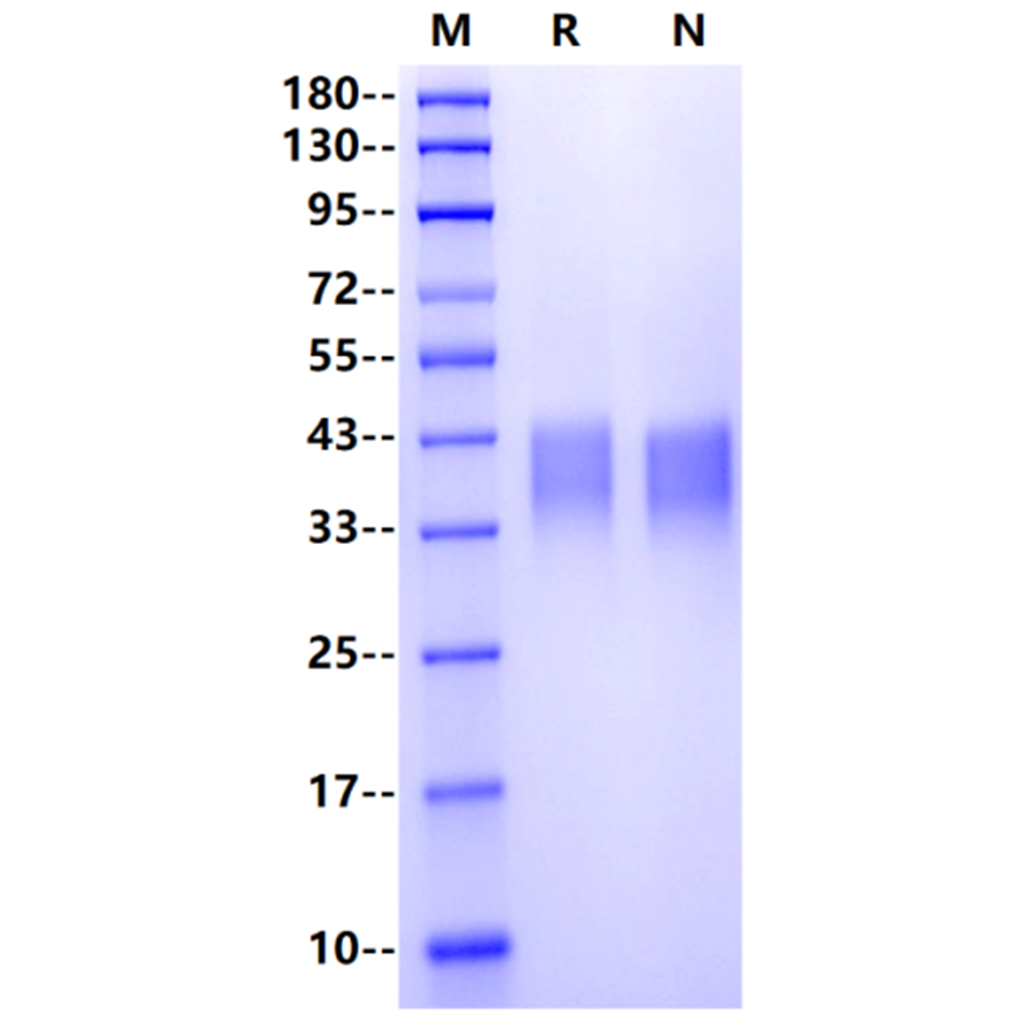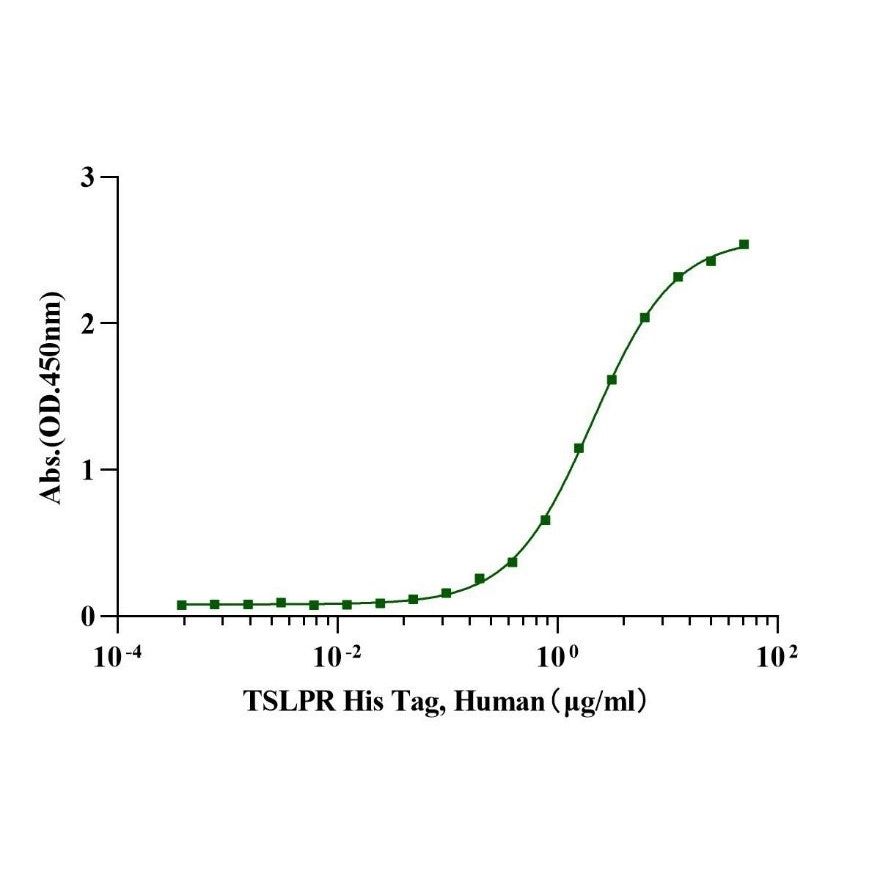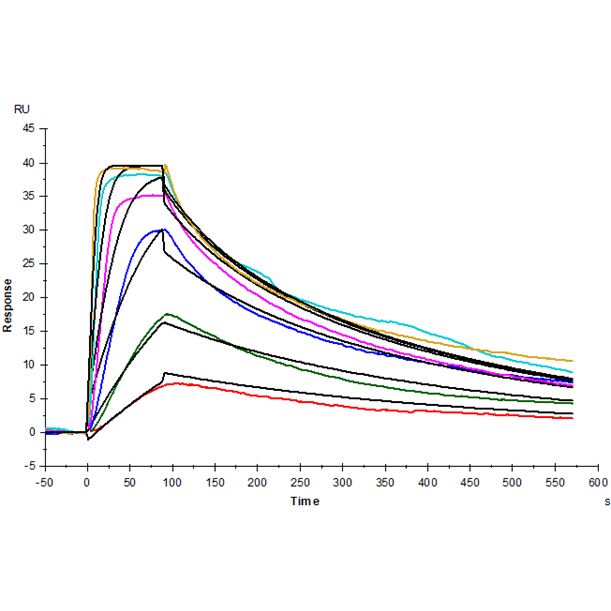Product Details
Product Details
Product Specification
| Species | Human |
| Antigen | TSLPR |
| Synonyms | CRLF2, CRL2, ILXR, TSLPR |
| Accession | Q9HC73 |
| Amino Acid Sequence |
Gln23-Lys231, with C-terminal 8* His QGGAAEGVQIQIIYFNLETVQVTWNASKYSRTNLTFHYRFNGDEAYDQCTNYLLQEGHTSGCLLDAEQRDDILYFSIRNGTHPVFTASRWMVYYLKPSSPKHVRFSWHQDAVTVTCSDLSYGDLLYEVQYRSPFDTEWQSKQENTCNVTIEGLDAEKCYSFWVRVKAMEDVYGPDTYPSDWSEVTCWQRGEIRDACAETPTPPKPKLSKGGGSHHHHHHHH |
| Expression System | HEK293 |
| Molecular Weight | 33-43kDa (Reducing) |
| Purity | >95% by SDS-PAGE |
| Endotoxin | <0.1EU/μg |
| Conjugation | Unconjugated |
| Tag | His Tag |
| Physical Appearance | Lyophilized Powder |
| Storage Buffer | PBS, pH7.4 |
| Reconstitution | Reconstituteat 0.1-1 mg/ml according to the size in ultrapure water after rapidcentrifugation. |
| Stability & Storage | · 12 months from date of receipt, lyophilized powder stored at -20 to -80℃. · 3 months, -20 to -80℃ under sterile conditions after reconstitution. · 1 week, 2 to 8℃ under sterile conditions after reconstitution. · Please avoid repeated freeze-thaw cycles. |
| Reference | 1.L S Park. Cloning of the murine thymic stromallymphopoietin (TSLP) receptor: Formation of a functional heteromeric complexrequires interleukin 7 receptor. J Exp Med. 2000 Sep 4;192(5):659-70. |
Background
The TSLP receptor (TSLPR, CRLM-2), a typical heterodimeric cytokine receptor consisting of a TSLP binding subunit (TSLPRα) and the α-subunit of the IL-7 receptor (IL-7Rα). TSLPR mRNA has been detected on many immune cell types, including dendritic cells (DCs), T cells, B cells, mast cells, NKT cells and monocytes as well as in tissues from heart, skeletal muscle, kidney and liver. TSLPR has low affinity for TSLP, but in combination with IL-7Rα generates a high affinity binding site for TSLP and triggers signaling. The TSLPR regulates target gene expression via the JAK/STAT signalling pathway with participation of signal transducers and activators of transcription STAT3, STAT5 and STAT1. Genetic, experimental, and clinical evidence suggests that the TSLP-TSLPR pathway is associated with the pathogenesis of allergic diseases such as atopic dermatitis (AD) and asthma.
Picture
Picture
Bioactivity
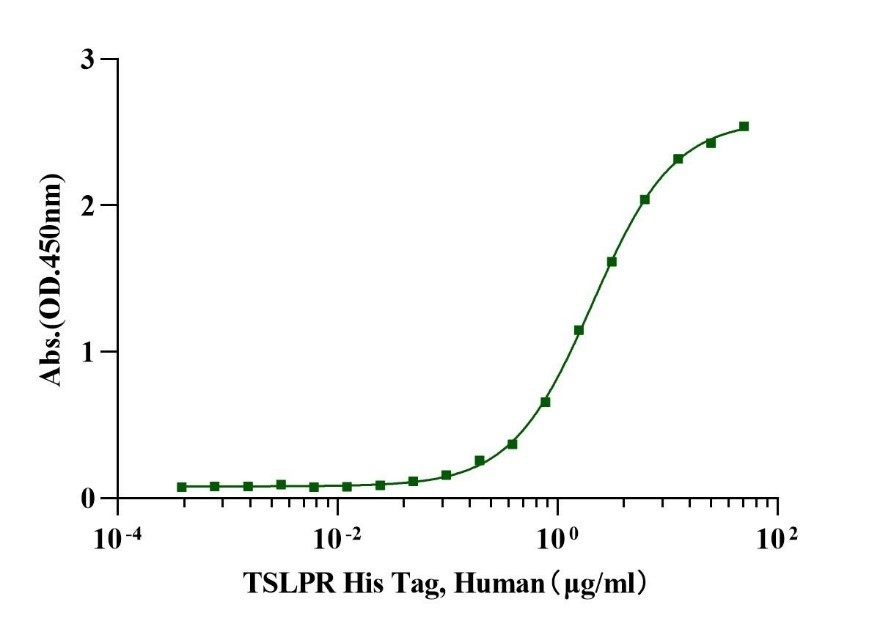
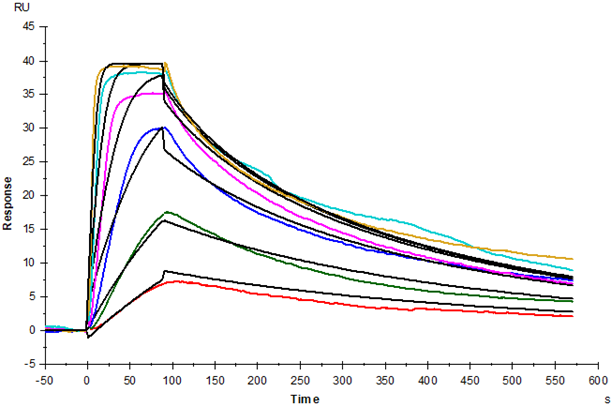
SDS-PAGE
